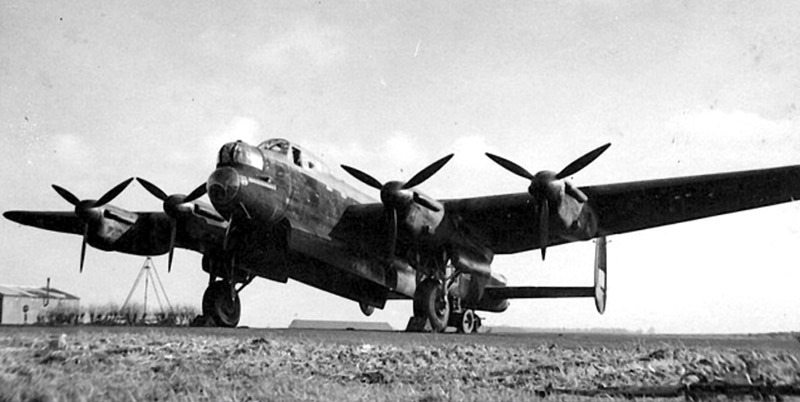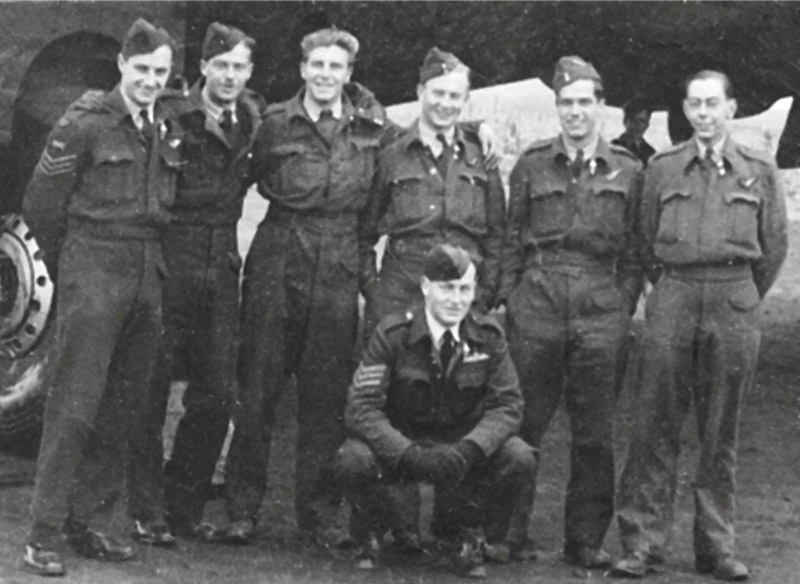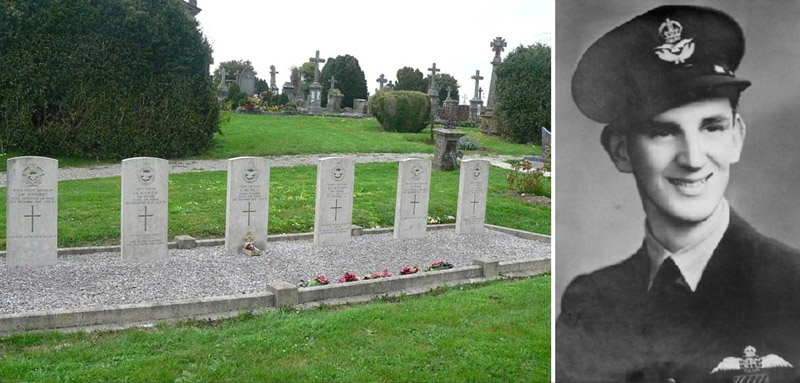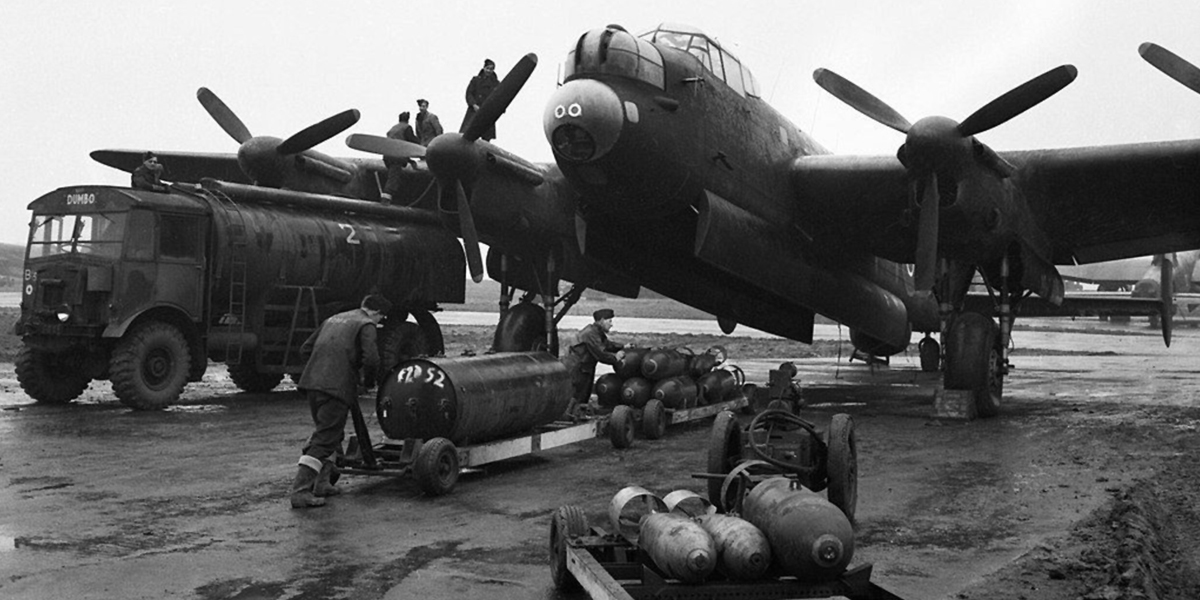No Christmas for them 75 years ago
Header image: In December 1942 RAF Bomber Command was heavily involved in the bombing offensive against Germany. (Ground crew refuelling and bombing-up a Lancaster of 75 (NZ) Sqn.)
Seventy-five years ago, as Christmas 1942 approached, RAF Bomber Command, which now included 12 squadrons of Avro Lancasters, was heavily involved in the bombing offensive against Germany. The last major raid before Christmas was launched on the night of 21st / 22nd December 1942 against Munich. The Command’s intention was then to give the crews something of a break over Christmas Day and, as it happened, extensive and persistent fog over many of the Bomber Command airfields between 25th and 27th December precluded further major operations until after then.
One of the bomber crews involved in the final major operation before Christmas was that of 22-year-old Australian pilot Flight Sergeant Colin ‘Col’ Bayliss of 103 Squadron, based at Elsham Wolds in North Lincolnshire. No 103 Squadron had been operating the Lancaster since late October, having previously flown the Handley-Page Halifax. The Squadron is credited with more operational sorties than any other No 1 Group unit during World War Two, and consequently suffered the Group’s highest casualties, losing 179 aircraft with 1,338 aircrew killed, missing or captured.

‘Col’ Bayliss and his crew were on their eighth ‘op’ of their tour, the first two of which had been flown in Halifaxes before the squadron converted to the Lancaster. They were no doubt looking forward to a break from ‘ops’ over Christmas. They took off from Elsham Wolds at 17:38 on Monday 21st December in Lancaster B1 W4820, which wore the code letters ‘PM-S’, as part of a force of 137 RAF bombers dispatched to bomb Munich that night, with a total of 119 Lancasters, nine Short Stirlings and nine Vickers Wellingtons from 1 and 5 Groups, and the Pathfinder Force.

On the way to the target, at 20:04, the Bayliss crew’s Lancaster was attacked by a German ME Bf110 night fighter flown by Leutnant Ferdinand Christiner of NJG (Nachtjagdgeschwader) 4. The Lancaster caught fire and, as Bayliss tried to hold it steady for the crew to bale out, it blew up. Perhaps the night fighter’s cannon shells hit the bomb load. Miraculously, ‘Col’ Bayliss was blown clear and was able to pull his ripcord and parachute safely to earth. He was the only survivor. All the other six members of the crew were killed in the exploding aircraft, the wreckage of which fell to earth at Bar-le-Duc, 6km from Vavincourt, France.
Sergeant Gwilym ‘Nick’ Nicholls from Wales, Australian Sergeant John Jefferies, Pilot Officer Ivor Faulk from Worcestershire, Australian Sergeant Robert ‘Robbie’ Robb, Sergeant Arthur Jeffreys from Blackpool and Sergeant George Kitchen from Leeds, were buried side by side in the Vavincourt Community Cemetery, Meuse, France. With the help of the French Resistance, Bayliss evaded capture for over a month until he was eventually caught at Tours railway station on 26th January 1943. He spent the rest of the war as a POW. For all of them there were to be no Christmas celebrations that year.

They were not the only 103 Squadron aircraft that did not get home that night. Lancaster W4787, captained by Flight Lieutenant John Rose DFC RAAF, on his 19th ‘op’, also failed to return having been shot down, most likely by flak, near Mauberge with the loss of all seven members of the crew. In all, 12 aircraft – eight Lancasters, three Stirlings and one Wellington – were lost from the raiding force that night.
As we enjoy our Christmas in 2017 it does no harm to remember that it is because men like these gave up their Christmases and their lives 75 years ago that we have the peace and security to do so today. Also please spare a thought for those in the RAF who will be on active service over this Christmas period, involved in operations such as OP SHADER over Syria and Iraq.
Postscript: Oberleutnant Ferdinand Christiner, the German night fighter pilot who shot down Lancaster W4820 ‘PM-S’, was killed on operations in a Ju-88G-1 night fighter on 5th / 6th July 1944.







